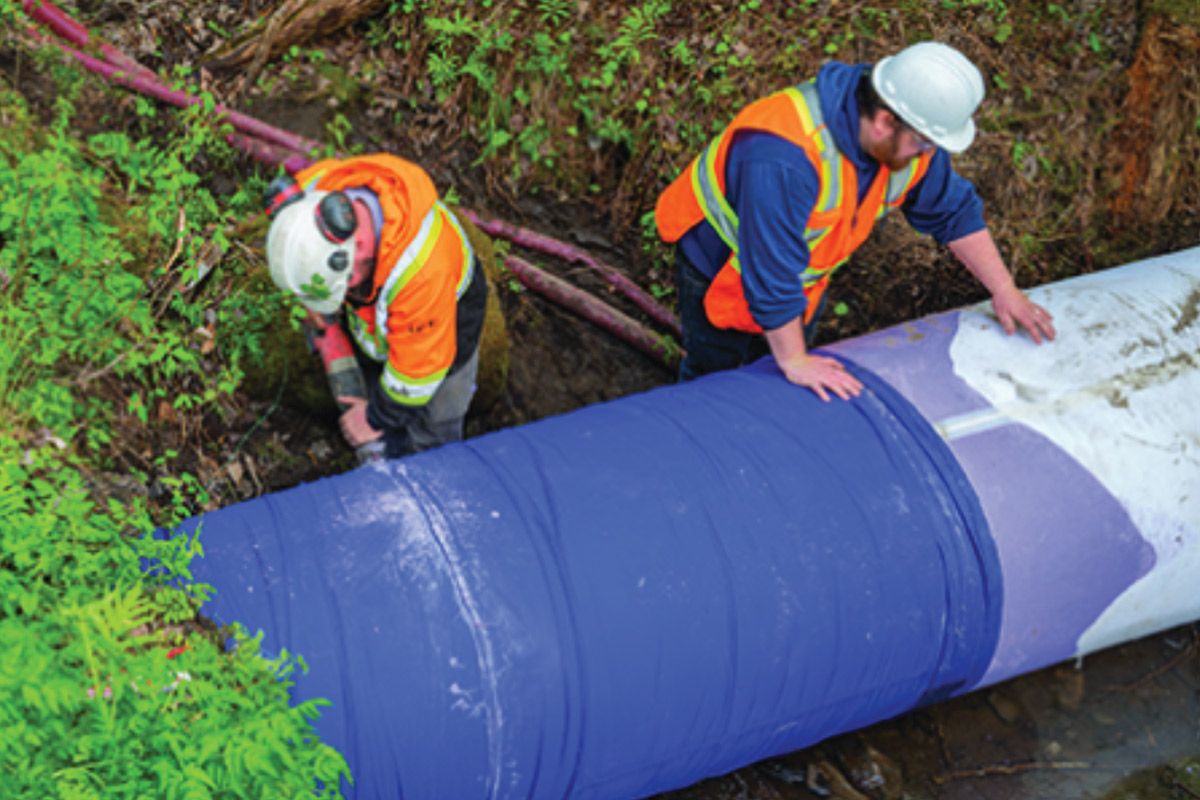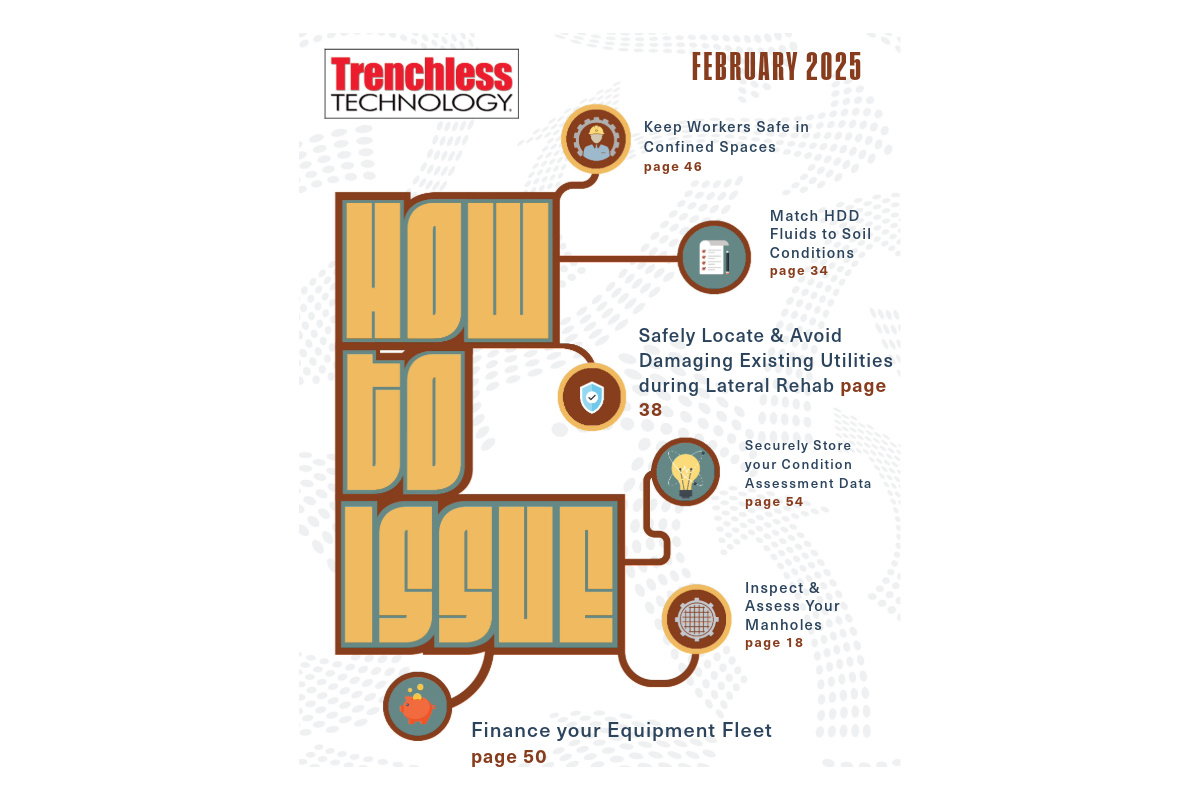CATT Starts Canada-Specific Annual Buried Infrastructure Survey
November 4, 2014
 How do you find out about: the critical issues for municipal water, wastewater and storm water buried infrastructure; the mechanisms that municipalities contemplate to address budgetary shortfalls; the customers’ satisfaction levels for trenchless service providers; and so on? You ask questions, conduct survey and look at data.
How do you find out about: the critical issues for municipal water, wastewater and storm water buried infrastructure; the mechanisms that municipalities contemplate to address budgetary shortfalls; the customers’ satisfaction levels for trenchless service providers; and so on? You ask questions, conduct survey and look at data.The Centre for Advancement of Trenchless Technologies (CATT) did just that when it issued its first Canadian Municipal Buried Infrastructure Survey.
The survey, published in May and officially released on CATT’s website in July, covers a wide range of topics from coast to coast to coast. In all, 124 municipalities from Alberta, British Columbia, Manitoba, New Brunswick, Nova Scotia and Ontario responded. Of those 124, 57 percent were municipalities with population less than 50,000.
The majority of respondents, about 90 percent, were from Ontario. CATT executive director Dr. Mark Knight chalks that fact up to CATT’s location and that most of its members are from Ontario. He added that the survey is one way that CATT hopes to expand its breadth across Canada.
“I think it’s interesting for our first time that we surveyed, the response that we received. I was really happy with the survey response,” Knight says. “Even though the majority were from Ontario, we can see it growing across Canada. I think it is a comprehensive survey.”
Unlike similar surveys conducted by other trenchless organizations and publications, CATT saw a need for a survey that was specific to Canada. This first survey will serve as the baseline for future, yearly surveys, which Knight hopes will gain respondents as CATT tries to advance the use of trenchless technologies throughout Canada.
“The first Canadian Infrastructure Report Card (CIRC) was released in 2012 by the Federation of Canadian Municipalities and it talks about the infrastructure backlog and condition grade of the assets but it doesn’t have anything to do with how to fix or how to get rid of the deficit,” Knight says. “We tried to link how trenchless fits with respect to the infrastructure deficit.”
The CIRC 2012 notes that about 68 percent of the infrastructure owned by the municipalities falls under the water, wastewater and stormwater categories. The 2012 report estimates the total replacement cost of drinking water systems to be $68.6 billion, with transmission and distribution representing 73 percent of that total. On the wastewater side, the replacement cost is $70 billion and pipelines account for 79 percent of that.
When looking at those large sums, it’s important to remember that properly designed trenchless projects have been calculated to save up to 40 percent of cost when compared to open-cut alternatives. That savings correlates to municipalities getting more work done while facing tighter budgets.
 Critical Issues
Critical Issues
Asking the respondents specifically about the critical issues related to the systems rated in CIRC 2012, they reported:
• Water mains: 70 percent reported that reducing leakage and breaks and improving water quality as critical or very critical.
• Wastewater systems: 75 percent reported inflow and infiltration (I/I) as a critical or very critical issue and about 40 percent reported that surcharging, pipe collapses and flow capacity as critical or very critical.
• Storm water systems: about 50 percent said that flow capacity, surcharging, pipe collapse and I/I as critical or very critical. Click here for larger image.
With the majority in agreement that there are critical issues with these systems, it is no surprise that municipalities are taking an active role in asset management.
In medium population (50,000 to 300,000) and large population (300,000 or more) municipalities, 80 percent said they have separate asset management groups. In the small population municipalities (less than 50,000), about half do not have separate asset management groups.
When addressing those critical issues, 70 percent said rate increases are important or very important; 80 percent consider access to government grants as critical or very critical; about 50 percent reported that long-term financing is useful or very useful; and about 21 percent said public-private partnerships are useful or very useful when deciding how to fund the repairs.
 Interesting Results
Interesting Results
When looking at the CATT survey, Knight said there were a few results that stood out.
Chief among them was the number of municipalities that used a trenchless method for all or part of a project. He added, those municipalities that use trenchless technologies tend to be very strong supporters of the benefits and will likely use the trenchless method again.
Based on the knowledge that they have, respondents backed up the 40 percent savings figure, with 71 percent reporting that trenchless methods are a cost-effective or very cost-effective. A majority also agreed that the trenchless alternatives are useful or very useful in deep installations and congested neighbourhoods or when working in environmentally sensitive areas. Click here for larger image.
What was surprising, despite the cost and economic benefits to trenchless methods, many municipalities still rely on open-cut methods proving, “There is a lot of room for growth of trenchless when compared to open-cut methods,” Knight says.
The report summary states that this lack of information and knowledge on the part of city engineers and councils serves as a hindrance to the adoption of trenchless methods.
Growth in the industry will come from increased education, which speaks to another aspect the CATT survey uncovered.
Of the respondents, 62 percent cited a lack of qualified trenchless contractors as a barrier and 52 percent cited a lack of knowledgeable consultants as a barrier.
Seventy-one percent of the respondents were satisfied to very satisfied with consultants performance for open-cut vs. 48 percent who were satisfied to very satisfied with their trenchless consultants.
What was the chief reason for these results? Is there a reason for the lack of contractors, consultants?
“More programs need to be developed if you want to have more contractors and people in the industry. If you create more work, people will come. That’s part of the industry,” Knight responded. “On the consultant’s side, the consultants need to learn what these techniques are and how to become experts.”
Education is Key
Knight added that at a typical CATT event, 70 to 80 percent of the attendees fall into the contractor category and very small percentage are consultants. The consultants need more training and education in trenchless techniques especially if they want to have good design and successful project.
Looking at the CATT/Trenchless Technology Roadshow (TRS) event in May, the largest Canadian-specific trenchless conference, there were 450 attendees and Knight would like to see that event continue to grow given its location in Niagara Falls and its specification to the Canadian trenchless industry.
“There is a lot of room for growth in training and that is maybe something that the governments may need to do more in order to encourage the development of programs like EPCIP (Education Program for Civil Infrastructure Professionals) and training,” Knight says. To find out more about the program, visit catt.ca.
Knight also pointed out that it is impractical for municipalities to dig up and replace their entire buried infrastructure because of limited resources and logistic issues.
Despite the proven benefits of the trenchless technologies for more than 20 years, municipalities are not investing in trenchless training with 40 percent reporting that training budgets are less than $5,000. However, 80 percent of the respondents listed training as being very important or important.
That is not a large number considering these are departmental not individual budgets. A typical CATT one-day event costs less than $500 per person. Something like the TRS is about $600.
“Infrastructure projects are huge projects. A fraction of investment in training will bring huge return in terms of successful completion of projects and will cover the training costs. It doesn’t take much to recoup your money for training.”
“What I think this survey really demonstrates is that there is still lots of room for growth in the trenchless area,” Knight says.
Survey Will Continue
Looking ahead, Knight says the 2013 survey is the benchmark for future surveys. The 2014/15 survey can be filled out at surveymonkey.com/s/CATT_Survey2014. It takes about 10 to 15 minutes to complete. Results should be available by early 2015.
Knight hopes the 2014 survey gains more participants from across the country and as the survey evolves, it garners enough responses so CATT can measure how trenchless varies by regions as well as municipality size. This will create a more accurate measure of what is going on in terms of buried infrastructure improvements across Canada.
“If we get enough difference, we can start to breakout, depending on the number of responses, and look at how the industry varies by region,” Knight says. “We can see who is using the trenchless technologies and where. For instance, in British Columbia, people are interested and then there are some interesting things going on in terms of growth on east coast in the Maritimes and Atlantic provinces.”
Mike Kezdi is an assistant editor for Trenchless Technology.

 Critical Issues
Critical Issues Interesting Results
Interesting Results


